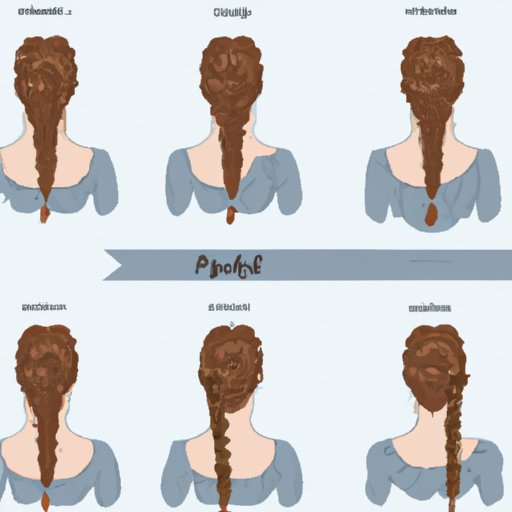
Introduction
Dutch braiding is a beautiful and intricate hairstyle that is perfect for any occasion, from a casual day out to a formal event. However, for some, the process of dutch braiding can be daunting. With its seemingly difficult technique, variations, and styles, it can be difficult to know where to start.
In this article, we will explore how to dutch braid your own hair, step-by-step, offer tips to avoid common mistakes, guide you through variations that suit different hair types, demonstrate simple and time-efficient hairstyles for busy mornings, and highlight advanced techniques to take your style to the next level. We’ll also guide you through accessorizing your dutch braid to accentuate your overall look.
A step-by-step guide to dutch braiding for beginners
The dutch braid, also known as an inverted braid, is a variation of the classic three-strand braid where each section is crossed under the middle one instead of over it. Here’s how you can achieve the look in easy steps:
– Brush your hair and create a side or center part.
– Take a small section of hair near the hairline from one side and divide it into three equal parts.
– Cross the right strand under the middle strand, then cross the left strand under the middle.
– As you continue braiding down, each time you cross under the middle strand, add a small section of hair from the front of your head into the braid.
– Repeat this process until you reach the nape of your neck.
– Once you get to the nape of your neck, continue braiding in a regular braid to the end of your hair.
– Tie off the braid with a hair tie.
Some common mistakes made when trying to dutch braid include knotting or tangling your hair, not adding hair into the braid evenly, and starting the braid too high or too low. To avoid these mistakes, brush your hair thoroughly, take your time, and practice on a model or with a friend.
Dutch braid variations for different hair types
A dutch braid can suit different hair types, such as short, curly, fine, and thick hair. However, the way you style the braid can vary depending on your hair type. For shorter hair, you may want to create a half-up dutch braid or braid a few inches down to create a unique hairdo. If you have curly or fine hair, you may want to keep the braid loose or use a texturizing spray or mousse for a soft and flexible braid.
For thicker hair, you can create a thick braid or create a double dutch braid for a more intricate look. Double dutch braids are formed by creating two dutch braids instead of one. It can be a bit more complicated, but with practice, you’ll be able to master it.
Quick and easy dutch braid hairstyles for busy mornings
If you’re looking for simple and time-efficient hairstyles, dutch braiding is perfect for busy mornings. Here are some easy dutch braid hairstyles:
1. Messy low bun: Dutch braid your hair from your hairline and secure the braid into a low bun. The messy look adds volume and texture.
2. Half up-half down: Part your hair down the middle, then create two dutch braids on each side of the part. Tie the two braids together at the back of your head, leaving your hair down.
3. Crown braid: Dutch braid your hair on both sides of your head, then wrap each braid around to create a crown. Secure with bobby pins for a stunning look.
Advanced dutch braiding techniques to take your style to the next level
If you’re already familiar with dutch braiding, you can take your style to the next level with advanced techniques. Here are a few examples:
1. Fishtail dutch braid: This style mixes the dutch braid technique with the fishtail braid. Divide your hair into two sections and create two fishtail braids using the dutch braid technique.
2. Lace dutch braid: This style is similar to a regular dutch braid, but the hair sections are woven instead of braided. Weave the sections together for a stunning look.
Accessorizing your dutch braid with the right hair accessories
Hair accessories can elevate your dutch braid look. Here are a few ideas for hair accessories that complements dutch braids:
1. Hairbands: Use a simple hairband to keep your braid in place.
2. Hair clips: Use hair clips to section your hair before braiding. Choose clips that complement the color of your hair.
3. Floral accessories: For a bohemian look, use floral headbands or clips to decorate your braid.
Conclusion
Dutch braiding may seem daunting at first, but with the right guidance and resources, it can be simple and enjoyable. By following these step-by-step instructions, you can perfect your dutch braiding technique, explore variations, and create stunning hairstyles. Don’t forget to accessorize your dutch braid to accentuate your overall look. With a little practice, you’ll be a dutch braid expert in no time.





